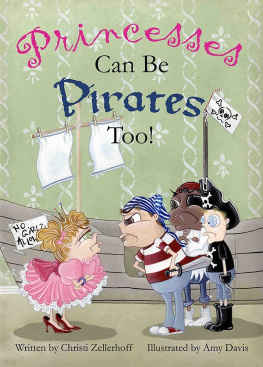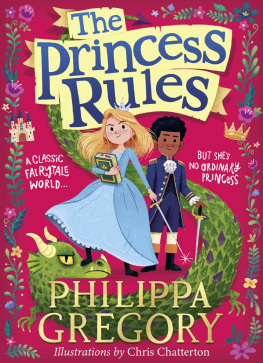The Charmed Circle
Joseph II and the Five Princesses,
1765-1790
Central European Studies
Charles W. Ingrao, founding editor
Gary B. Cohen, editor
Howard Louthan, editor
Franz A. J. Szabo, editor
Daniel L. Unowsky, editor
The Charmed Circle
Joseph II and the Five Princesses,
1765-1790
Rebecca Gates-Coon
Purdue University Press
West Lafayette, Indiana
Copyright 2015 by Purdue University. All rights reserved.
Gates-Coon, Rebecca.
The Charmed Circle: Joseph II and the Five Princesses, 1765-1790 / Rebecca Gates-Coon.
pages cm. -- (Central European Studies)
Includes bibliographical references and index.
ISBN 978-1-55753-694-5 (paperback)
ISBN 978-1-61249-369-5 (ePDF)
ISBN 978-1-61249-370-1 (ePub)
1. Joseph II, Holy Roman Emperor, 1741-1790. 2. Joseph II, Holy Roman Emperor, 1741-1790Friends and associates. 3. PrincessesAustriaViennaBiography. 4. AustriaCourt and courtiersBiography. 5. PrincessesAustriaVienna Correspondence. 6. WomenAustriaViennaCorrespondence. 7. Aristocracy (Social class)AustriaViennaHistory18th century. 8. Vienna (Austria) Social life and customs18th century. 9. AustriaHistory1740-1789. I. Title.
DB74.5.G38 2015
943.053092dc23
[B]
2014021340
Cover image: Carl Shtz (1745-1800). Schloss Schnbrunn gegen den Garten. Wiener Strassenbilder im Zeitalter des Rokoko. p. 20. 1914. Engraving. Print Collection, Miriam and Ira D. Wallach Division of Art, Prints and Photographs, The New York Public Library, Astor, Lenox, and Tilden Foundations.
To my family, immediate and extended.
Contents
| EL | Eleonore Liechtenstein |
| FR | Franz Rosenberg |
| JII | Joseph II |
| JC | Josepha Clary |
| LK | Leopoldine Kaunitz |
| LL | Leopoldine Liechtenstein |
| ML | Moritz Lacy |
| MT | Maria Theresia |
| SK | Sidonia Kinsky |
| HA SB | Habsburgisch-Lothringische Hausarchive (12. Jh.-1918), Hausarchiv, Sammelbnde |
| HHStA | Haus-, Hof- und Staatsarchiv |
| KA NL | Kabinettsarchiv, Staatsrat, Nachla Franz M. Lacy |
| KLA, FAR | Familienarchiv Rosenberg in the Krntner Landesarchiv, Klagenfurt, Austria |
| LRRA | Lobkovicov Roudnit, Rodinn Archiv, Nelahozeves, formerly at itenice |
| NM, RAM | Rodinn Archiv ternberk-Manderscheid, Nrodn Muzeum, Prague |
| NRAS, DHP | National Archives of Scotland, Edinburgh, Douglas Home Papers |
| SOAL-D, RACA | Rodinn Archiv Clary-Aldringen (Teplice), Sttn Oblastn Archiv v Litomicch, Poboka Dn |
| SA, RAM AC | Rodinn Archiv Metternich, Acta Clementina, Sttn |
| stedn | Archiv, Prague |
| ZT | Zinzendorf Tagebcher, Reprosammlungen [microfilm], Kabinettsarchiv |
During the early stages of this project I was assisted by several Short-Term Travel Grants from the International Research and Exchanges Board (IREX) for visits to archives in Litomice, Dn, and Prague, for which I am grateful. The friendliness and professionalism with which I was treated there and in Vienna, Klagenfurt, Brno, and Edinburgh really cannot be overstated. The Liechtenstein archivist (Hausarchiv der regierenden Frsten von Liechtenstein) of Vienna and Vaduz sent copies of additional materials relating to the lives of Leopoldine and Eleonore Liechtenstein, and the Hohenzollern-Hechingen archive in the State Archive of Sigmaringen, Germany provided supplementary documents pertinent to the lives of princesses Clary and Kinsky, members of that family prior to their marriages. I have met with kindness from so many individuals that it would not be possible to mention all of them here. I am particularly thankful for the Lobkowicz familys permission to access the Liechtenstein-Kaunitz correspondence in the Lobkowicz archives. I also wish to acknowledge Professor Derek Bealess kind assistance with source material at the outset of the study.
No Habsburg monarch has been treated by so many biographers as Joseph II, sometimes styled the revolutionary Emperor. Over the more than two centuries since his death, however, a marked feature of the bulk of these biographies has been the instrumentalization of the emperor for the political agendas of the times in which they were written. Substantial studies based on significant archival research have, until recently, been few and far between, and the two most importantthose by Henrik Marczali (1885-1888) and Pavel Mitrofanov (1907) were more major studies of aspects of Josephs reign rather than conventional biographies. In many respects, therefore, the recent completion of an extensive two-volume biography by Derek Beales is not only a milestone in the Joseph II historiography, but the most ambitious and exhaustive biography of the emperor ever attempted. Though Bealess work will no doubt serve as a standard reference work for all students of this monarchs reign for decades to come, there is nevertheless still substantial scope for scholarly engagement with many aspects of both his policies and his personality.
One of the many strengths of the Beales biography is its analysis of the curious mixture of affability and irascibility, of engaging warmth and contemptuous coldness, of touchiness and insensitivity of Josephs personality. Among the sources used by Beales to illuminate this dimension of the study was the exchange of letters among five aristocratic women who formed Josephs inner social circle for most of his adult life. This archival material has now been more exhaustively mined by Rebecca Gates-Coon in the volume to hand. What emerges is not only further revealing insight into the personality of Joseph II, but a richly textured study of aristocratic life in the Habsburg monarchy during the second half of the eighteenth century. Though the Habsburg nobility is receiving increasing attention in contemporary Habsburg historiography, this study of a unique group of noble women adds significantly to our understanding of the experience of noble life from a female perspective. It simultaneously sheds new light on court life under Joseph II, as well as uncovering the many layers of related topics, such as attitudes toward marriage and children, land-holding and privilege, and social habits and norms.
In addition to contributing to current debates on nobility and court life in the later eighteenth century this volume confronts us with the rather curious spectacle of reforming emperor finding social solace in a circle of women totally out of sympathy with his reforms, and of a group of high society ladies proud of their special relationship with a monarch of whose political engagement and personality they were highly critical. In analyzing why both parties would find the arrangement mutually beneficial, the author adds further depth to the portrait of Joseph II drawn by Beales. The pronounced strain of misogyny combined with the desperate need for some form of female companionship allowed an obviously very lonely and isolated emperor to find emotional fulfillment in this circle of acquaintances despite not taking any of the womens political or social views seriously. Although Josephs association with the group he affectionately referred to as












